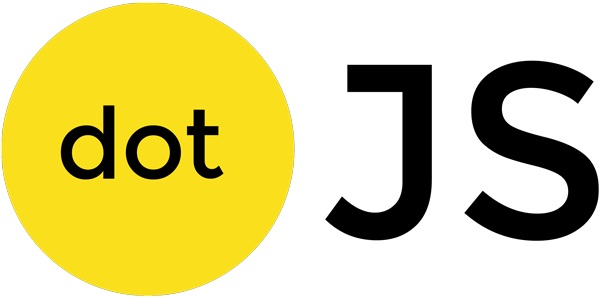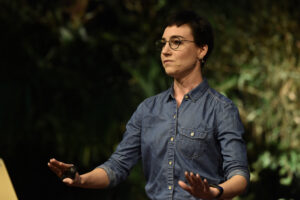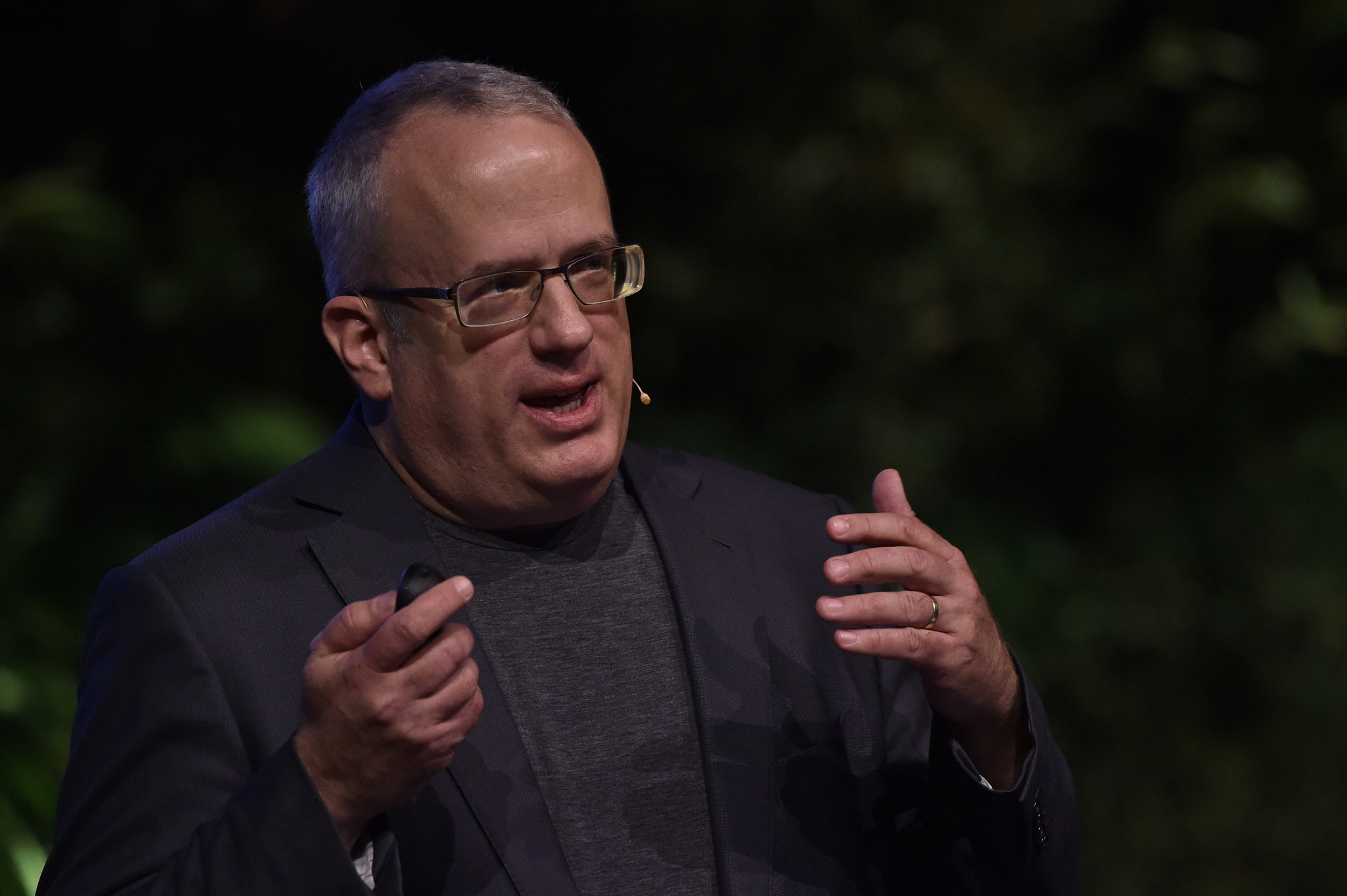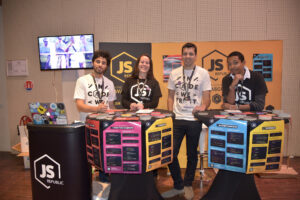JavaScript is the Next Big Language.

With an excellent catering service, the program consisted of approximately 10 big talks of 30 minutes each, and Lightning Talks 15 minutes. Between each session of talks, the space was reserved for the exchange with demos organized by the various Sponsors and, of course, the hunt for “goodies” (you had to catch them all).
Without further ado, here we go! We are going to give you 4 feedback from the 10 big talks that interested us the most.
In the morning
After a few pastries and a good coffee, it was time for the first round of talks, including Wes Bros., Trent Willis, Suz Hinton et Feross Aboukhadijeh were the announcers.
We are going to talk to you more specifically about the talks of Trent Willis and Suz Hinton.
Working Well: The Future of Web Testing

Testing is useful and very good, but it is not enough that these tests assure us that our software works: they must give us the assurance that our software works carefully. That's how Trent Willis started his talk and he went on to list the three pillars of “walk well” :
- To be accessible
- Be efficient
- The code sent is well used (defined as necessary)
There is no shortage of tools to achieve these three criteria. We can talk about the design and the aria-attributes for the first point, the Server Side Rendering (SSR) and Progressive Web Apps (PWA) for the second point and the splitting code for the last point. The issue raised by Willis is: do we have tests to measure these criteria?
With the help of the Chrome team, now it's possible. Thanks to Headless Chrome and Chrome DevTool Protocol we have programmatic access to DevTools which opens up new paths for tools like Puppy.
With Pupetter, testing that our software works well becomes possible. With axis-core it is possible to test accessibility. ember-macro-benchmark allows you to test performance and with the DevTools you can have a coverage report to see if the code of a page is actually used.
QUnit was also introduced as a tool for End to End (e2e) testing.
Trent Willis ended by saying that with all these tools, the future promises to be bright for web development.
Slides
Using Machine Learning to Fix the Web
The problem ofaccessibility is often overlooked by web developers. Suz Hinton, after a superb story on the symbol representing the handicapped and its recent evolution, showed us the positive potential of Machine Learning to help improve accessibility. She did this by giving an example on Instagram, as image titles are often not descriptive enough. With a single fetch() and a bit of machine learning, we can add attributes alt on each picture. The machine learning model is trained enough to analyze the images and return a good description.

Suz shows yet another example, this time injecting live captions into her Twitch livestreams. At first, Hinton had to use websockets to transmit his audio to a server, with a model already trained to recognize his voice, in charge of retransmitting the transcription in order to then be injected into the video with a small hack. Soon the last step will no longer be necessary, as Twitch will allow injecting transcripts out of the box.
Suz Hinton, concludes by recalling that machine learning can be a tool to help make the internet more accessible, although it always depends on us and our common sense.
Back in the afternoon
Like every year at DotJS, the afternoon is embellished with lightning talks 15 minutes. We had the right to various and varied subjects such as:
- The benefits of using Server-Side Rendering
- The interest of implementing TypeScript on a project
- The various problems that can be encountered with the + operator in JavaScript
- And many more…
For this article, we have chosen to give you feedback on the presentations of Adrian Holováty and, of course, Brendan Eich who is none other than the creator of JavaScript (just that)!
Adrian Holováty : Another look at the use of frameworks
ReactJS, Vue.js, Angular… And you, which framework will you use on your project?
It is potentially the first question that arises when starting a new project. We weigh the pros and cons of the different frameworks made available to us depending on the project. But if we made a plan without framework?
Adrian Holováty, who is none other than one of the creators of Django (Python framework), gave us a feedback giving us serious food for thought…

First, he explained to us that today we all use frameworks in our projects (both in JavaScript and in other languages). And although serving to simplify our lives, it is not always the best choice because we tend to forget that not using frameworks is also a solution.
He showed us a project he made without a framework: SoundSlice.
The result was clear: the application is functional, responsive and adapts to different browsers.
His message is clear: Native JavaScript is always an option for large projects.
He also took advantage of his Talk to give us feedback on the design of a framework. While initially this framework was created for the sole purpose of saving time on the creators' professional projects, users increasingly demanded new features to make their lives easier as well. Like any open-source framework, this one is brought to evolve according to the requests of the community, even if these functionalities are not necessarily useful to the creators.
Brendan Eich: JavaScript, past, present and future
It was in May 1995 that our beautiful language, the JavaScript was born.
In just 10 days, Brendan Eich created this language for Netscape so that web pages become dynamic.

And then 23 years later, JavaScript is one of the most popular languages, constantly evolving and meeting the most advanced needs.
His talk recounts the evolution of JavaScript from its creation to the next evolutions of the language (especially with the bigInt and private methods in classes).
Brendan Eich ends his talk with a little philosophical thought:
Things that are impossible just take longer.
To conclude
As every year, the content of the conferences was very enriching. It was also an opportunity for us to present our company and meet other JavaScript enthusiasts, like us.
If you too share the same passion as us, join us!

[actionbox color=”default” title=”” description=”JS-REPUBLIC is a service company specializing in JavaScript development. We are an approved training center. Find all our technical training on our partner site dedicated to Training” btn_label=”Our training” btn_link=”http://training.ux-republic.com” btn_color=”primary” btn_size=”big” btn_icon=”star” btn_external =”1″]
